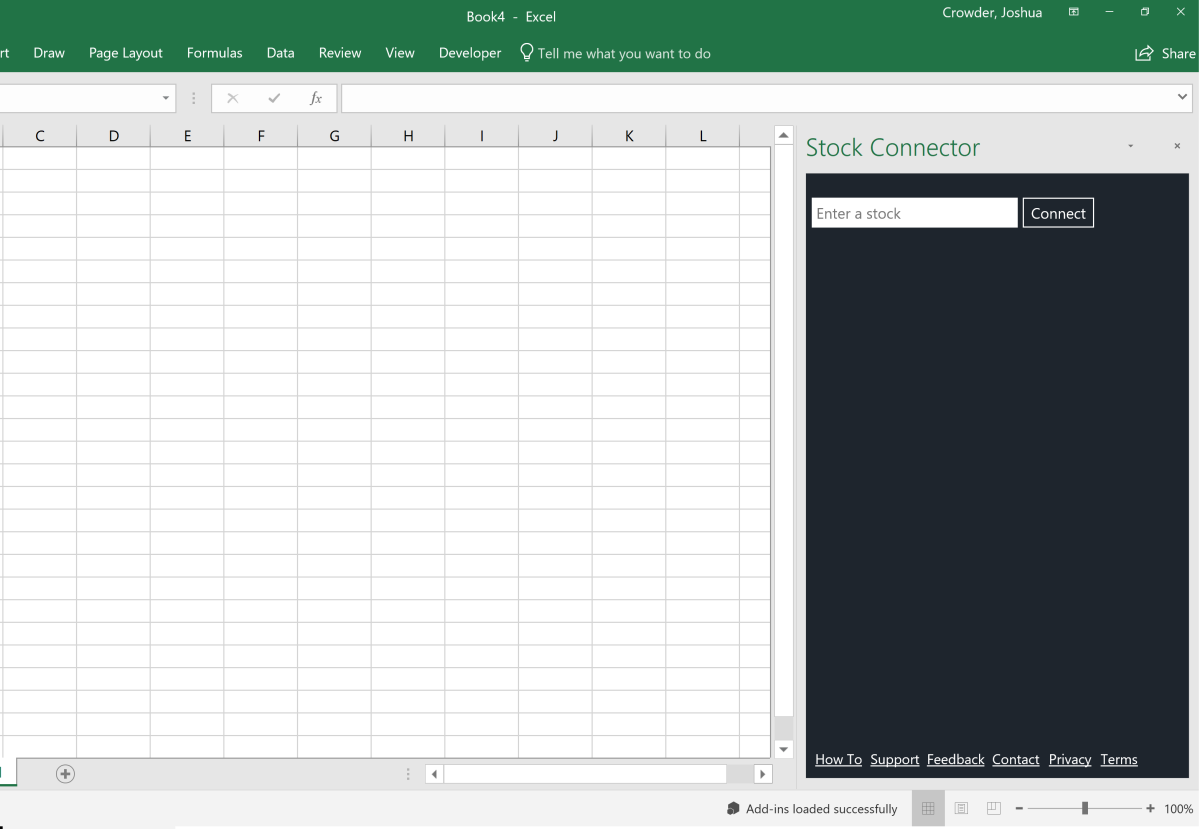
#LINK STOCK MARKET TO EXCEL FOR MAC HOW TO#
If the data is incorrect or missing, or you can't achieve your task… we want to know! See How do I give feedback on Microsoft Office for details on how to give feedback on the STOCKHISTORY function. We’re continuously improving the STOCKHISTORY function. For example, if Decemis provided as the start date and interval is monthly, then Decemwill be returned as that is the start date for the period requested. TODAY()) or a cell reference to a cell with a date.ĭate returned may be earlier than the date provided. The STOCKHISTORY function belongs to the Lookup & Reference family of functions.ĭate arguments can be a date enclosed in double quotes (e.g. Lowest price of the lowest day’s low in the period Highest price of the highest day’s high in the period Opening price on the last trading day in the period These properties are defined as follows:Ĭlosing price on the last trading day in the period

For example, to include Date, Open, and Close, enter 0,2,1. The value you enter for each property corresponds to the property number. When you enter the property arguments, you type a number for each property 0 through 5, in the order you want to see them. Make sure the Advanced radio button is selected. Next, we need to input the URL we want to use and setup our API key as a header item to authenticate with CoinMarketCap. Under the Data tab in the ribbon, select Get Data > From Other Sources > From Web. To pull the data into Excel, we use a web query. If you delete the formula, the cells that it filled have the General format. Step 1: Setup the CoinMarketCap Web Request in Excel. The STOCKHISTORY function does not stamp a format on the cells that it spills into. If any of them is present, only the indicated columns are returned in the order provided. The columns that are retrieved for each stock as follows: 0 = Date, 1 = Close, 2 = Open, 3 = High, 4 = Low, and 5 = Volume. When included, headers are rows of text that are part of the array returned from the function. Specifies whether to display headings as follows: 0 = no headers, 1 = show headers, 2 = show instrument identifier and headers. Specifies the interval each data value represents as follows: 0 = daily, 1 = weekly, 2 = monthly.

The latest date for which data will be retrieved. Note that if interval is not 0 (daily), the first data point may be earlier than the start_date provided - it will be the first date of the period requested. The earliest date for which data is retrieved.
#LINK STOCK MARKET TO EXCEL FOR MAC CODE#
You can also refer to a specific exchange by entering a 4-character ISO market identifier code (MIC), followed by a colon, followed by the ticker symbol (e.g., "XNAS:MSFT"). This will pull data from the default exchange for the instrument. Enter a ticker symbol in double quotes (e.g., "MSFT") or a reference to a cell containing the Stocks data type. The STOCKHISTORY function syntax has the following arguments:įunction returns historical price data about the financial instrument corresponding to this value. =STOCKHISTORY(stock, start_date,, ,, ,, ,, , )

Important: The STOCKHISTORY function requires a Microsoft 365 Personal, Microsoft 365 Family, Microsoft 365 Business Standard, or Microsoft 365 Business Premium subscription.


 0 kommentar(er)
0 kommentar(er)
